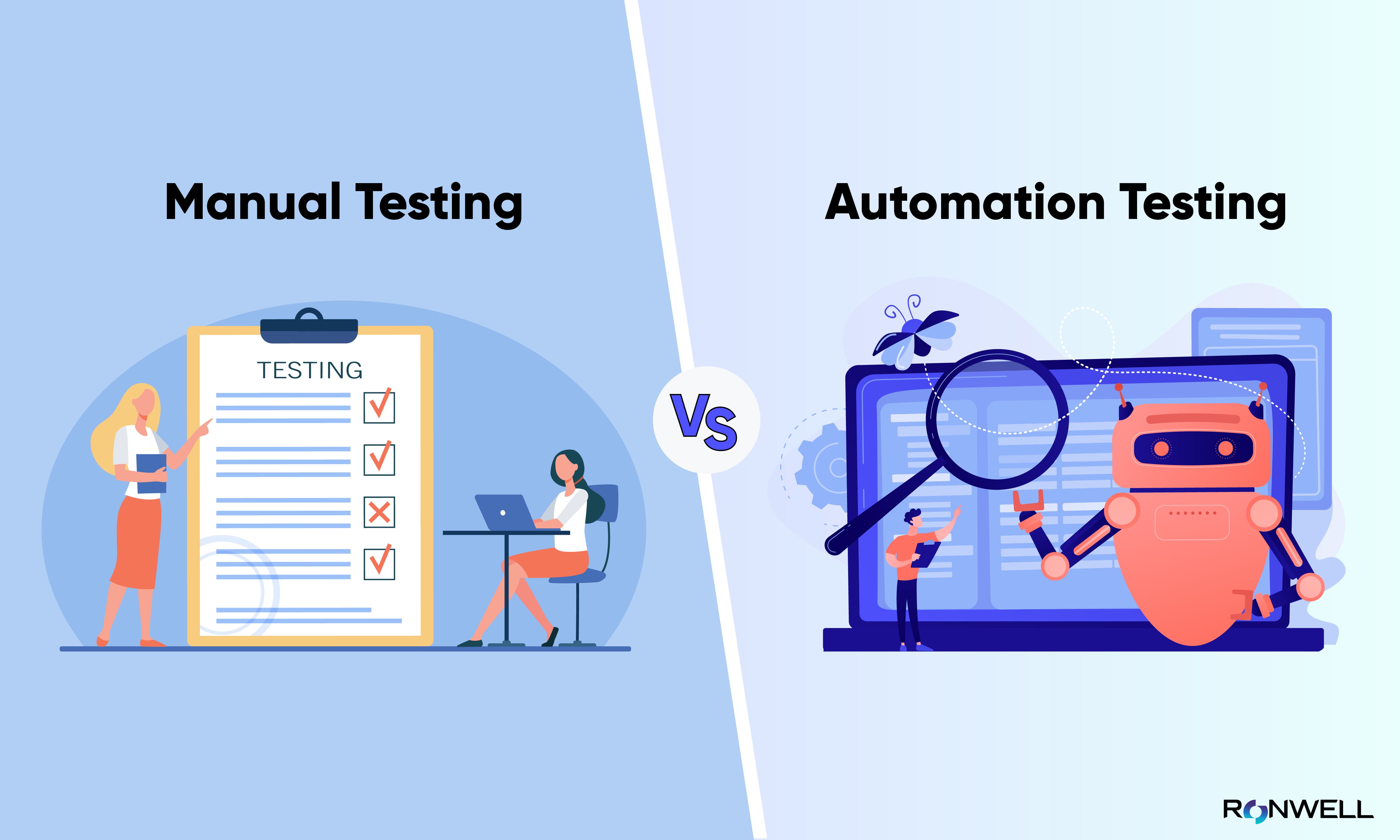From Guidebook to Automated Testing: A Comprehensive Guide to Transitioning Smoothly and Successfully
In the world of software program testing, the change from handbook to automated processes has actually become an increasingly crucial shift for organizations looking for to boost effectiveness and accuracy in their testing techniques. The trip from guidebook to automated screening is not without its challenges, but when come close to strategically and with a clear strategy in mind, the benefits can be considerable.
Benefits of Automated Checking
Automated testing provides countless advantages, boosting efficiency and precision in software advancement procedures. One primary advantage is the significant reduction in screening time. Automated tests can be run simultaneously on several tools and operating systems, substantially speeding up the screening phase contrasted to manual screening. This raised efficiency permits for faster feedback on the high quality of the software program, enabling designers to recognize and deal with concerns quickly.
Moreover, automated screening makes certain a greater degree of precision in spotting problems. Considering that automated examinations comply with predefined manuscripts, human mistake is lessened, causing even more reliable examination outcomes. Uniformity in testing is additionally boosted, as automated examinations implement the very same actions specifically each time they are run. This uniformity is vital in ensuring that all performances of the software program are completely checked, minimizing the probability of undiscovered insects slipping via to manufacturing.
Choosing the Right Tools

First of all, examine your needs and purposes. Comprehend the range of your job, the innovations included, and the skill set of your team. This analysis will help you determine the capacities and attributes you call for in your screening devices.
Second of all, consider the compatibility of the tools with your existing processes and systems. Smooth assimilation with your present software program growth lifecycle is vital to make certain a smooth shift to automation.
Furthermore, examine the scalability and adaptability of the devices. As your screening requires progress, the tools should have the ability to adjust and suit changes effectively.
Last but not least, variable in the assistance and neighborhood around the devices. When implementing automated testing, durable support and an energetic individual area can supply valuable sources and support. By carefully considering these elements, you can select the right tools that align with your demands and set the phase for a successful shift to automated testing.
Composing Reliable Test Scripts

When crafting test scripts, it is important to consider the specific needs of the software being checked and make sure that the scripts address all essential performances. Clear here and descriptive calling conventions for test manuscripts and test instances can improve readability and maintainability. In addition, integrating mistake handling systems within the examination manuscripts can help in recognizing and dealing with concerns quickly.
In addition, organizing examination scripts into modular components can boost reusability and scalability, decreasing redundancy and boosting effectiveness in examination script maintenance. Normal evaluations and updates to examine scripts are critical to keep speed with evolving software program demands and capabilities. By following these principles, testers can develop robust and efficient examination scripts that add considerably to the success of automated screening processes.
Integrating Automation Into Workflows
By flawlessly integrating automated screening tools like Selenium or Appium into the software program advancement lifecycle, teams can attain faster comments on code modifications, leading to quicker bug discovery and resolution. This integration permits for constant screening throughout the advancement process, making sure that any type of issues are recognized early on, resulting in greater software application quality. Appropriate integration of automation devices calls for partnership in between development, testing, and procedures teams to establish a unified operations that optimizes effectiveness and performance in delivering high-grade software items.
Making Certain a Smooth Transition
Effectively transitioning to automated screening involves precise preparation and mindful execution to lessen disturbances and optimize efficiency in the software advancement procedure - automation testing. To ensure a smooth transition, it is necessary to click here to find out more start by carrying out a thorough evaluation of the existing screening processes and determining locations Check This Out where automation can bring one of the most significant benefits. Engaging with all stakeholders early in the procedure, consisting of programmers, testers, and project managers, is vital for amassing support and buy-in for the automation effort
Interaction is vital throughout this transition stage. Clear interaction of the goals, advantages, and assumptions of automated screening assists to handle any kind of resistance or concerns that might emerge. Additionally, offering sufficient training and sources for employee to upskill in automation tools and techniques is important for making sure an effective change.

Verdict
To conclude, transitioning from handbook to automated screening supplies numerous benefits, including enhanced effectiveness and integrity. By picking the appropriate tools, composing efficient examination manuscripts, and incorporating automation flawlessly into workflows, organizations can make sure a smooth and effective transition. It is vital to accept automation as a beneficial property in software testing processes to enhance general top quality and performance.
In the world of software program testing, the shift from handbook to automated processes has actually come to be a significantly crucial shift for organizations seeking to boost performance and precision in their testing practices. Automated tests can be run simultaneously on numerous tools and operating systems, considerably speeding up the screening stage contrasted to hands-on screening. Uniformity in testing is likewise boosted, as automated examinations carry out the same steps exactly each time they are run.To guarantee the effective implementation of selected testing tools, the creation of efficient test scripts plays an essential duty in validating the capability and performance of automated processes - automation testing. By complying with these principles, testers can develop efficient and durable test manuscripts that contribute significantly to the success of automated screening procedures
Comments on “Automation Testing: Trick Tips to Enhance Advancement Lifecycles”